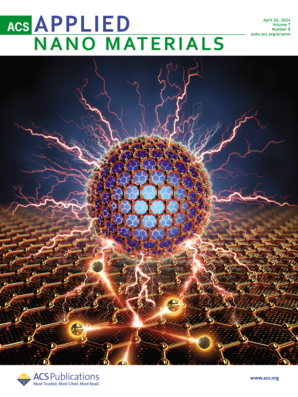Antibacterial compounds-incorporated functional biomaterials for chronic wound healing application via 3D bioprinting: The mechanism of action
IF 5.5
2区 材料科学
Q2 MATERIALS SCIENCE, MULTIDISCIPLINARY
引用次数: 0
Abstract
Wounds represent a critical issue in the healthcare industry since they are highly susceptible to infections that in turn lead to more serious complications. With bacterial infections gradually growing to be a challenge to wound healing, fighting bacterial resistance has become one of the important pillars of addressing issues faced by healthcare personnel. Thus, gaining an understanding of the distinct stages of wound healing is vital to further improve relevant therapies incorporating the application of antibacterial compounds. Recently, three-dimensional (3D)-printed functional biomaterials have emerged as an alternative treatment or potential carriers incorporating relevant antibacterial agents, offering a new approach to skin tissue engineering. Novel strategies for skin tissue engineering are grounded in the integration of bioactive ingredients and antibacterial agents into biomaterials with different morphologies to improve cell behaviors and promote wound healing by preventing bacterial colonization. This paper reviews the function of natural and synthetic polymers, effects of antibacterial properties, and cell interactions in terms of the wound healing process. Extensive research has demonstrated that 3D functional biomaterials exert their therapeutic effects through multifaceted pathways, including but not limited to, modulating inflammation, facilitating tissue regeneration, promoting cell proliferation, enhancing angiogenesis, and controlling infection. This review also provides general insights into the elegant design for 3D scaffold and further refinement of wound dressing.通过三维生物打印技术将抗菌化合物融入功能性生物材料,用于慢性伤口愈合:作用机制
伤口是医疗保健行业的一个关键问题,因为伤口极易受到感染,进而引发更严重的并发症。随着细菌感染逐渐成为伤口愈合的一个挑战,对抗细菌耐药性已成为解决医护人员所面临问题的重要支柱之一。因此,了解伤口愈合的不同阶段对于进一步改进应用抗菌化合物的相关疗法至关重要。最近,三维(3D)打印功能生物材料作为一种替代疗法或包含相关抗菌剂的潜在载体出现,为皮肤组织工程提供了一种新方法。皮肤组织工程新策略的基础是将生物活性成分和抗菌剂整合到不同形态的生物材料中,通过防止细菌定植来改善细胞行为和促进伤口愈合。本文回顾了天然和合成聚合物的功能、抗菌特性的影响以及伤口愈合过程中的细胞相互作用。大量研究表明,三维功能性生物材料通过多方面途径发挥治疗作用,包括但不限于调节炎症、促进组织再生、促进细胞增殖、增强血管生成和控制感染。本综述还对三维支架的优雅设计和伤口敷料的进一步完善提供了一般性见解。
本文章由计算机程序翻译,如有差异,请以英文原文为准。
求助全文
约1分钟内获得全文
求助全文
来源期刊

ACS Applied Nano Materials
Multiple-
CiteScore
8.30
自引率
3.40%
发文量
1601
期刊介绍:
ACS Applied Nano Materials is an interdisciplinary journal publishing original research covering all aspects of engineering, chemistry, physics and biology relevant to applications of nanomaterials. The journal is devoted to reports of new and original experimental and theoretical research of an applied nature that integrate knowledge in the areas of materials, engineering, physics, bioscience, and chemistry into important applications of nanomaterials.
 求助内容:
求助内容: 应助结果提醒方式:
应助结果提醒方式:


